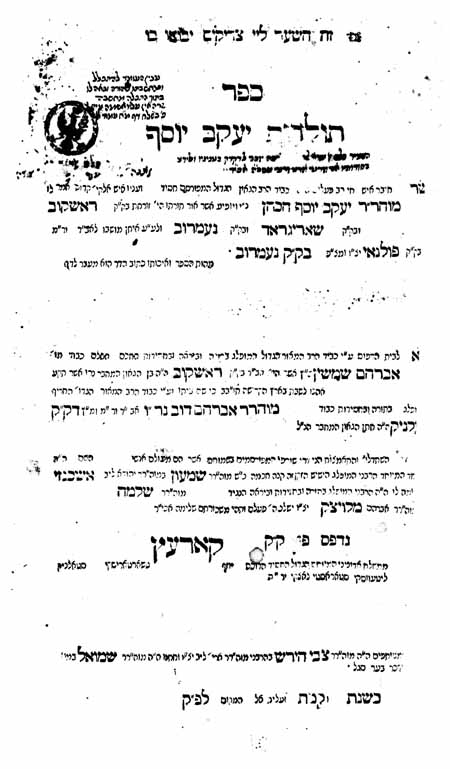First Judaica & Judaic Firsts: First Hasidic Book
No Jewish religious movement in modem times has had such instant success and lasting influence as Hasidism. Begun in the middle of the eighteenth century by a coterie of disciples of the charismatic figure of Israel Baal Shem Tov (1698-1760), Hasidism became a force powerful enough to seriously challenge the ways of the staid religious establishment in Eastern Europe. Within a century, its emphasis on God's immanence in the world, in the heart of man, and in every aspect of nature; its espousal of ecstatic worship of the Heavenly Loving Father; and its democratization of salvation by proclaiming sincere piety rather than learning as the more certain road to God won the allegiance of half of East Europe's Jews and evoked both admiration and hostility among the more "enlightened" Jewry of the West. Hasidism remains a religious movement of strength and influence today, a central force in the life of its adherents, and a stimulus to Jewish literary and artistic creativity.
To this day, the first published Hasidic book, Sefer Toldot Yaakov Yosef by Yaakov Yosef ben Zevi ha-Kohen Katz of Polonoye (Korets, 1780), has remained the single most important work in the entire hasidic literature. A volume of homilies on the Pentateuch, it is a harsh polemic against the religious leadership of its day, which he accuses of disenfranchising unlettered common folk, pious and God-loving as they might be, from fullest communion with the Heavenly Father. God, the religious teachers maintained, could be approached only by meticulously observant, gifted scholars. The book vividly espouses the vital religious way of Hasidism, with its promise of nearness to God for "all who call upon Him in truth." The significance of this volume, Samuel H. Dresner explains in his The Zaddik, is that it is "the main source for the teachings of the Baal Shem Tov ... [for] we have nothing from [his] own pen (save for a few letters). What Rabbi Yaakov Yosef did was to devotedly and scrupulously record the teachings of his master and to elucidate and develop them through his own thinking in a manner so rich and fruitful that what had been the treasured property of the few was made available to all."
According to Hasidic tradition the book sold but few copies and was harshly suppressed, even put to the torch in a number of communities. The remaining copies were so sought after for study that they "were devoured by eager spirits with such appetite that they were literally worn to pieces." A complete copy in good condition, such as the one now in the Library of Congress, is a great rarity.
 |
Sources: Abraham J. Karp, From the Ends of the Earth: Judaic Treasures of the Library of Congress, (DC: Library of Congress, 1991).


